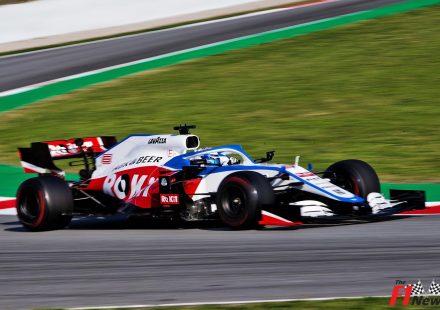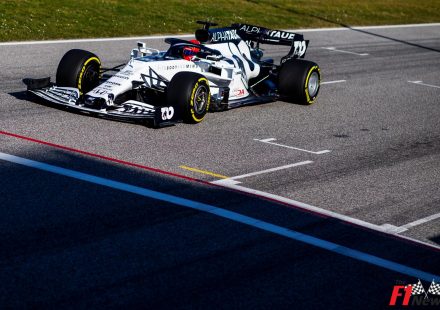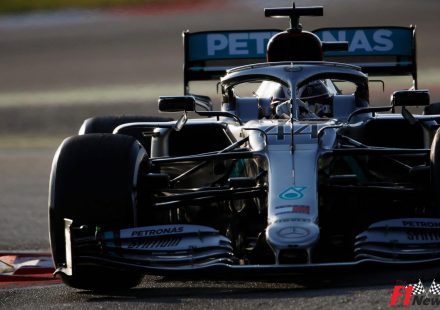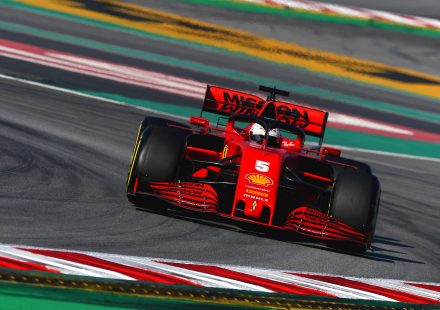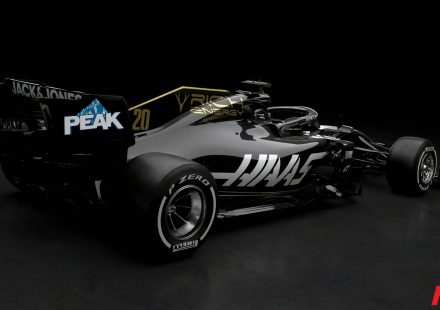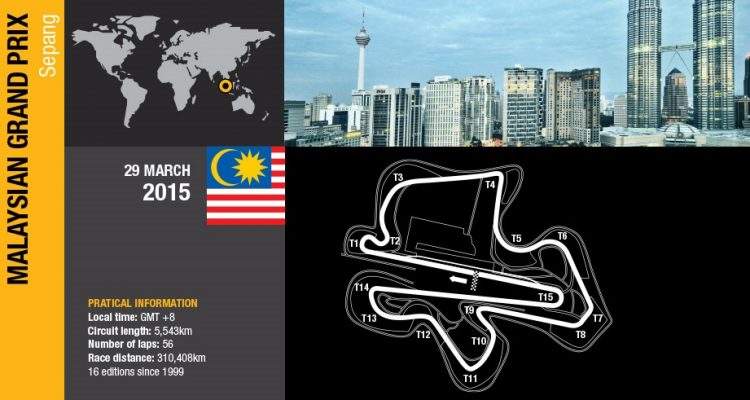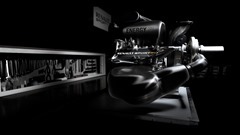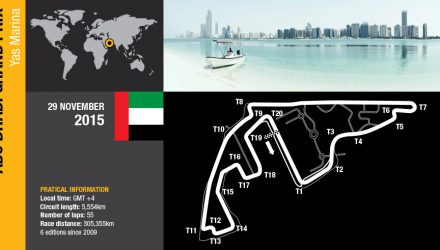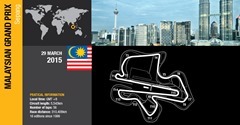 CYRIL ABITEBOUL, MANAGING DIRECTOR
CYRIL ABITEBOUL, MANAGING DIRECTOR
Australia certainly wasn’t an easy weekend and we fell short of our own expectations, and those of our clients. We need to work together to understand our issues, both within the Power Unit and the chassis. Our figures have shown that the laptime deficit between Red Bull and Mercedes in Melbourne was equally split between driveability issues, engine performance and chassis performance.
It’s therefore the overall package that needs some help and we have been working with the team to move forward. We’ve been particularly aggressive in development and we should see the results a lot more clearly in Malaysia, particularly since we have had the opportunity to refine the PU using the data from Australia. Work is still ongoing but even now we are in a completely different place to where we finished Melbourne.
RÉMI TAFFIN, DIRECTOR OF OPERATIONS
The genuine progress we made over the winter was not at all shown in Melbourne so we are highly motivated to go to Malaysia. We see it as a chance to press the restart button for the season. Our design development group has been working non-stop to create counter-measures to improve driveability and reliability and correct the issues we saw in Melbourne.
We have run in the dynos at Viry and will conduct further, refined tests after Malaysia. Additionally some of the issues we had were amplified by specific Melbourne characteristics such as track layout, up and down ambient temperatures and so on. Malaysia should be better in this regard since the conditions tend to stay stable throughout the weekend and we can focus progressively on set-up with the team, which should show our true level a lot clearer.
RENAULT 2015 FAST FACTS
Malaysia is one of the toughest races on the calendar for Power Unit suppliers. Ambient temperatures are 32°C on average. The air intake will reach over 50°C, temperatures that are only seen in the hottest deserts on the planet. With the V6 turbos, the higher the temperature, the lower the power output, so engineers work to cool the PU as efficiently as possible and prevent a power drop off. A drop of just one degree can gain around a tenth per lap. The high engine intake air temperatures may necessitate a change in ignition timing to avoid engine knock within the cylinder, one of the biggest problems of any turbo engine. The humidity does however improve this area since the pressure in the cylinder is less.
Given that this will be one of the hottest races of the year, the car bodywork will have its highest available cooling level to let more air circulate through the radiator ducts. These have been determined so that the PU temperatures are on their upper limit. Temperatures will already reach their maximum on the first lap of the race but will raise dramatically if the driver is closely following another car. Water temperatures within the PU will reach over 100°C, or greater than the boiling point of water. It is the pressure within the system that prevents the water evaporating.
FOCUS ON…MALAYSIAN GP 2005
2015 marks the tenth anniversary of Renault F1 Team’s first world championship title. Fernando Alonso won his first World Championship with the Renault R25 in Brazil at the tail end of the season, but his title campaign really got started in Malaysia. Team-mate Giancarlo Fisichella had taken the first blood with a win in Australia, but Fernando hit his stride at the second event in Sepang. The team appeared to have a big advantage over the rest of the field and Fernando took pole by over two tenths from the Toyota of Jarno Trulli. At the start he opened up a lead, and looked in command for the rest of the race. It was far from easy though, and Fernando looked exhausted as he climbed onto the podium to claim the winner’s trophy.
His engine engineer at the time was Rémi Taffin, who recalled the race from behind the scenes. ‘We had gone to Melbourne and scored a one-three as a team, but Fisico had been in front. We’d actually made a mistake in qualifying with the fuel level and that had hurt Fernando so we arrived in Malaysia incredibly motivated. We knew we had a good car and Fernando was on form. He loved Sepang – he’d scored his first pole there in 2003. We got the pole by some margin but Fernando had a fever on race day and didn’t feel great. He very nearly fainted when he got out the car, but he still managed to win by nearly 25secs. We were all so pleased – we knew we had a great driver on form – even when sick – and a great car. The engine was also one of the best I’ve ever worked on, and certainly the best in the field that year.
We had reworked the V10 concept and surprised everyone with how powerful and driveable it was. In this race Fernando had opened up a gap, then had it taken away with a safety car. Then he’d managed to expand it back to 25secs again. It made us really believe in ourselves and that we were in for a genuine shot at the championship.’
Back at the factory a small band of engineers were following the race on the big screen in Renault’s cinema room. One of them, Ricardo Penteado, who is now responsible for Viry’s operations room, was a dyno and simulation engineer at the time. ‘There were only two or three people in the room as the race was very early for Europe,’ Ricardo remembers. ‘The build up had been quite intense – even though we knew that we were well-organised and in control, there was a big effort to cope with Malaysia.
Humidity was high and we had tweaked the engine maps to deal with this. Seeing Fernando win by such a comfortable margin showed we had done the sums right. I can remember sending the results of the race to the entire factory; it was a great feeling. We got a bit overexcited at how far ahead we were so I even photoshopped my predications for the results of some future races and sent those as well…!’
ICE
The ICE will be running at full throttle for around 60% of the lap. This is one of the higher percentages of the season, particularly when compared to Australia, which was around 55%. Monza is of course the highest of the year, with around 75% of the lap taken at full throttle. The longest periods of wide open throttle are the pit straight and the back straight before the hairpin, both of which are approx. 1km each. The ICE will be flat out for around 10secs with speeds reaching over 310kph with DRS activated. Turns 5 and 6 are two of the fastest corners on the track, taken at an average 200kph, with only a small lift off between corners.
The high speed changes of direction put the internals of the engine under a lot of pressure, particularly the oil system, where the fluids are ‘squashed’ to one side by the g-forces. The humidity of the Malaysian climate reduces the air to fuel mix so theoretically gives the ICE an easier run as the greater the water content in the air, the less oxygen is available to burn. A turbocharged engine however always equalizes ambient pressure within the ICE so this effect will be mitigated. There are also tight mid to low speed corners so the engine needs to be responsive on the apex and exit of turns. In particular, the first corner complex requires good stability under braking and response on pick-up as it leads onto a long, curved straight.
TURBOCHARGER
The two long straights really put the turbo under heavy load. The ambient conditions further stress its internals since the lack of oxygen means the turbo has to spin at a much higher speed to generate the same power. The hairpin connecting the two straights and the T1-2 corner complex put an emphasis on turbo response. Braking forces slow the ICE’s revs to around 6,500rpm, with the turbo speed simultaneously dropping by around half.
MGU-K
Sepang is medium difficulty for the MGU-K since the majority of corners are medium to high speed. The opportunity to recover energy through braking is therefore minimal and fuel consumption is high when compared to the other circuits that feature a higher frequency of ‘stops’ such as Silverstone. One of the principle places to recover energy under braking is T1. Coming directly after the pit straight where the engine has been at full throttle, the driver will brake down from eighth to third gear and just 80kph for the entry of the turn. The hairpin T15 is also another recovery point with a speed of around 90kph.
MGU-H
Some 25% of the Sepang lap is comprised of straights so the MGU-H has plenty of opportunity to recover energy from the exhaust gasses. In fact Sepang is one of the most efficient circuits in this regard. The second and third sectors feature medium to high speed corners and the driver dances with the throttle and brakes. The ICE is at full throttle for around 40secs through these two sectors, which ultimately gives the MGU-H a decent amount of time to recharge.

